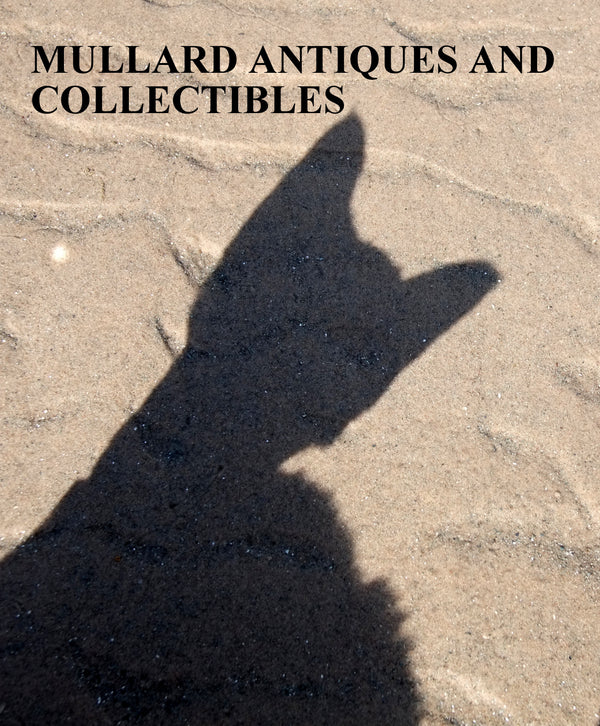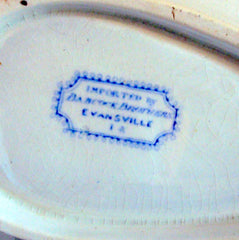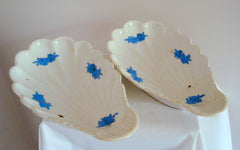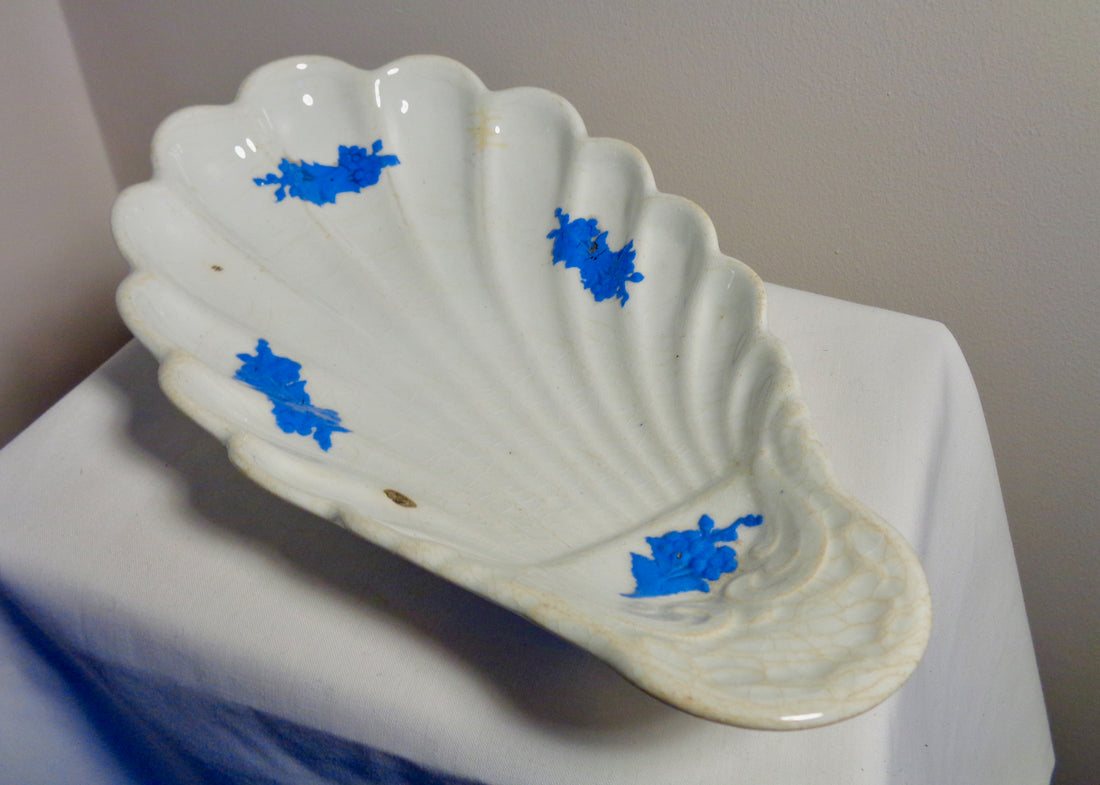
What do the Babcock Brothers, Evansville, Indiana & Thomas Goodfellow have in common?
What do the Babcock Brothers, Evansville, Indiana & Thomas Goodfellow have in common?
Whilst in the process of sorting through a box of pottery, belonging to my late Mum-in-Law, I came across a pair of shell-like cream antique dishes with the following back mark.
Imported by Babcock Brothers, Evansville, IA.
We knew they had been in our family for at least 60 years but no-one knew where the dishes originated. We were pretty sure they were 19th Century (Victorian) and they had the look of the Staffordshire pottery: ‘Adams Jasperware.’

After a trawl on the internet I thought that the back mark referred to the Babcock Brothers from Evansville, Indiana. Were they made in the UK for the US market. Why were they in the UK?
I wasn’t sure what to search for next and thought I would throw the question over to my good U.S friends in the Google+ Vintage and Antiques Community. I was not to be disappointed with Pam from WhimsicalVintage coming back with the following information:
There is no Evansville Iowa and that state abbreviation was never changed…however, state abbreviations used to be (prior to 1963) more than 2 letters. There is a Babcock Bros who moved to Evansville Indiana from Utica NY in the mid 1800’s. They were wholesalers of among other things, “Queensware”. Is it possible that the letter isn’t an A but an N, or it may be possible that it was mis-abbreviated. I pulled this from the History of Evansville and Vanderburgh County by Joseph Elliot.
Which was closely followed by more information on Henry Babcock kindly provided by Ann Kennedy.
Interesting indeed! Undeterred, I left it a couple of days before I went back on to the internet and, after quite a few fruitless searches, eventually found the following reference book:-
Queensware Direct from the PotteriesU.S. Importers of Staffordshire Ceramics in Antebellum America 1820–1860Studies in Archaeological Material Culture No. 1ByJohn A. Walthall
Guess what! There was my back mark, and the UK manufacturer, whom exported using the Babcock Brothers, was a Staffordshire Potter called Thomas Goodfellow.
Up to 1812, Goodfellow had actually leased a pottery in Burslem, Staffordshire, with then partner William Rhead, from Wedgwood, prior to moving to the Phoenix Pottery, Tunstall, Staffordshire. No wonder the dishes appeared similar to Jasperware!
After Rhead’s death, Thomas Goodfellow formed a partnership with William Bathwell (Rhead’s brother-in-law) in 1817, known as ‘Bathwell and Goodfellow.’ They were particularly well known for their blue and white pottery.
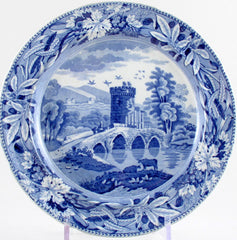
The company then passed to Thomas Goodfellow’s son, of the same name. Babcock Brothers imported Thomas Goodfellow’s II (1802-1858) pottery between 1850 and 1862!
Fantastic, we had traced them!
In answer to the question:
‘What do the Babcock Brothers, Evansville, Indiana & Thomas Goodfellow have in common?’
These lovely blue and white shell dishes were made in Staffordshire at the Phoenix Pottery, Tunstall, by Bathwell & Goodfellow for import by the Babcock Brothers of Evansville, Indiana, for the U.S market.
But one question remained unanswered.
How did the dishes destined for the U.S end up back in the UK? Did they ever leave the UK?
There was a reference in the Staffordshire Advertiser, in 1864, to the sale of one-hundred and seventy-eight crates of earthenware bound for the U.S. made by Thomas Goodfellow. These crates had been lying at Runcorn, England for four years since the death of Thomas Goodfellow.
Staffordshire Advertiser 2 Jan 1864
TO BE SOLD, by order of the Court of Chancery, 178 CRATES and CRATES of EARTHENWARE, suitable for the American Markets, manufactured by the late Thomas Goodfellow, Tunstall, and now lying at Runcorn.—To treat for the same, apply to James Vernon, Burslem.
We will never know for sure but since these dishes have turned up, one hundred and sixty years later, less than 10 miles from Runcorn, UK….
A coincidence?
What do you think?
A big Thank You to everyone in the V&A community for their comments and help with this detective story.
